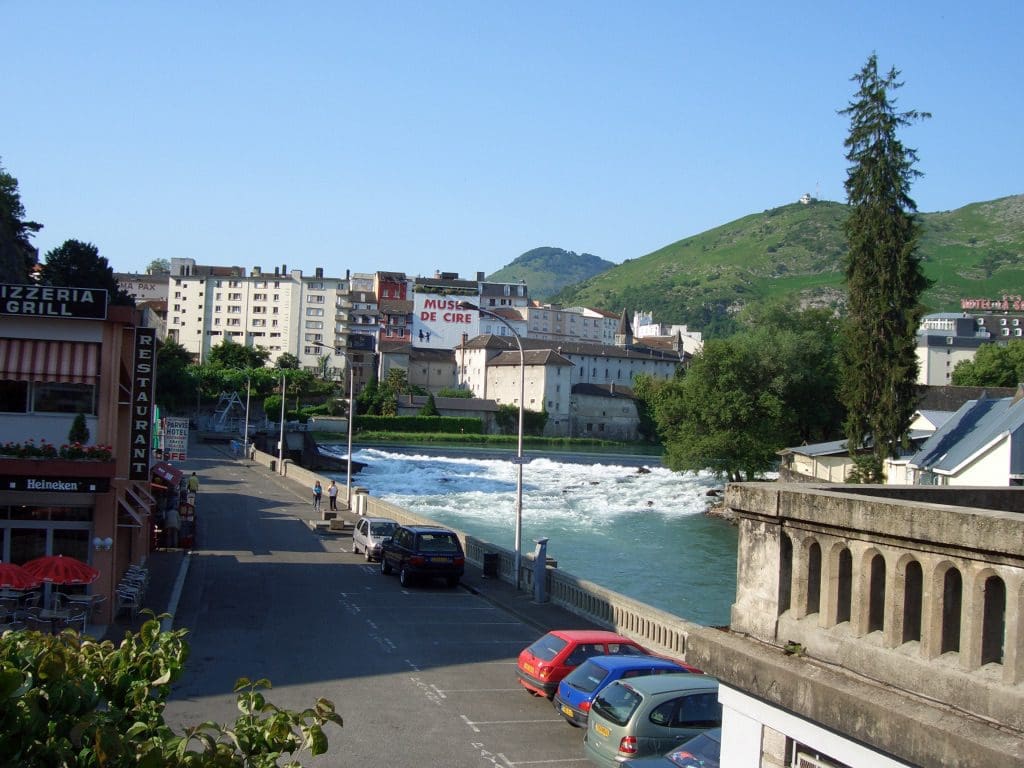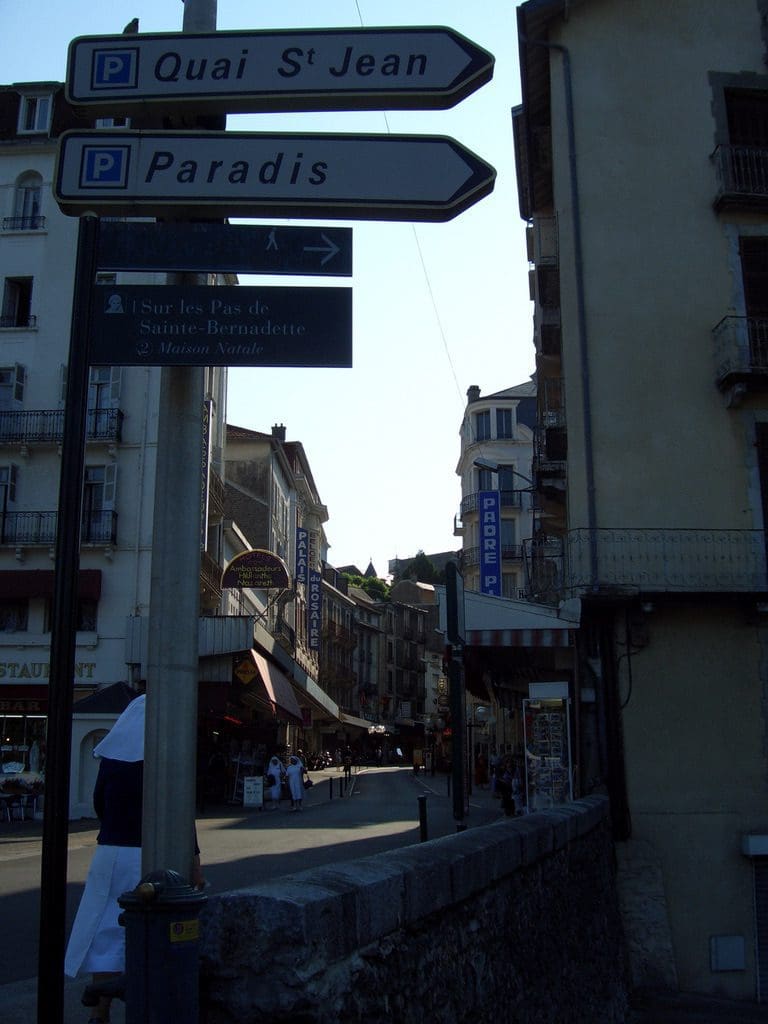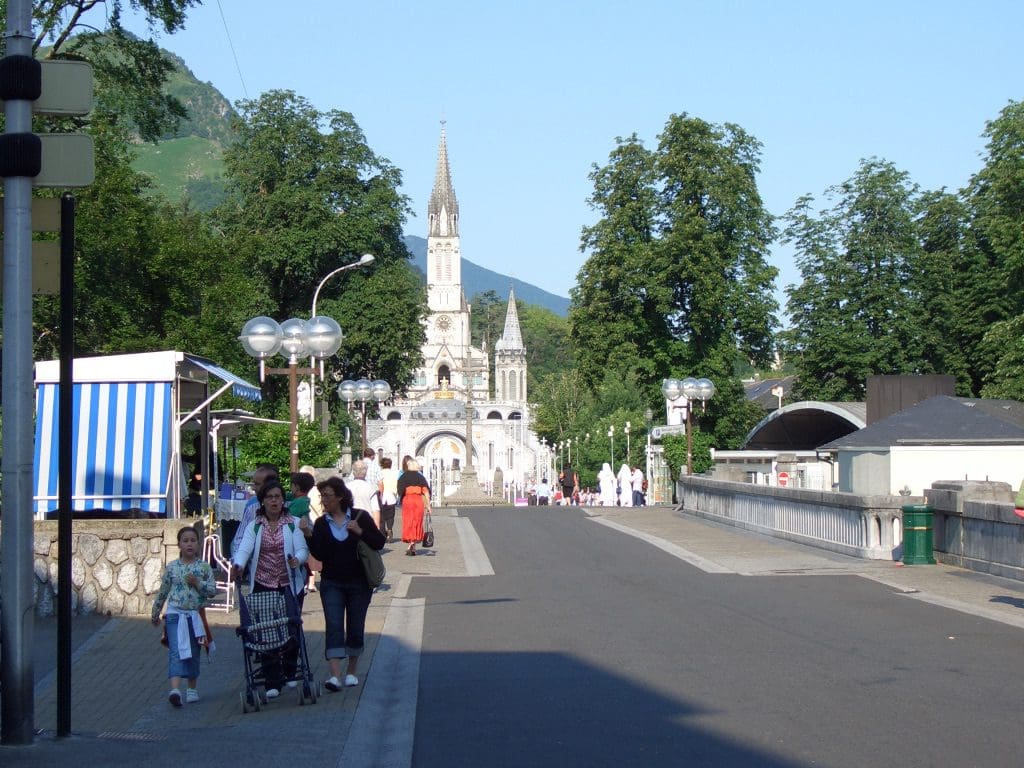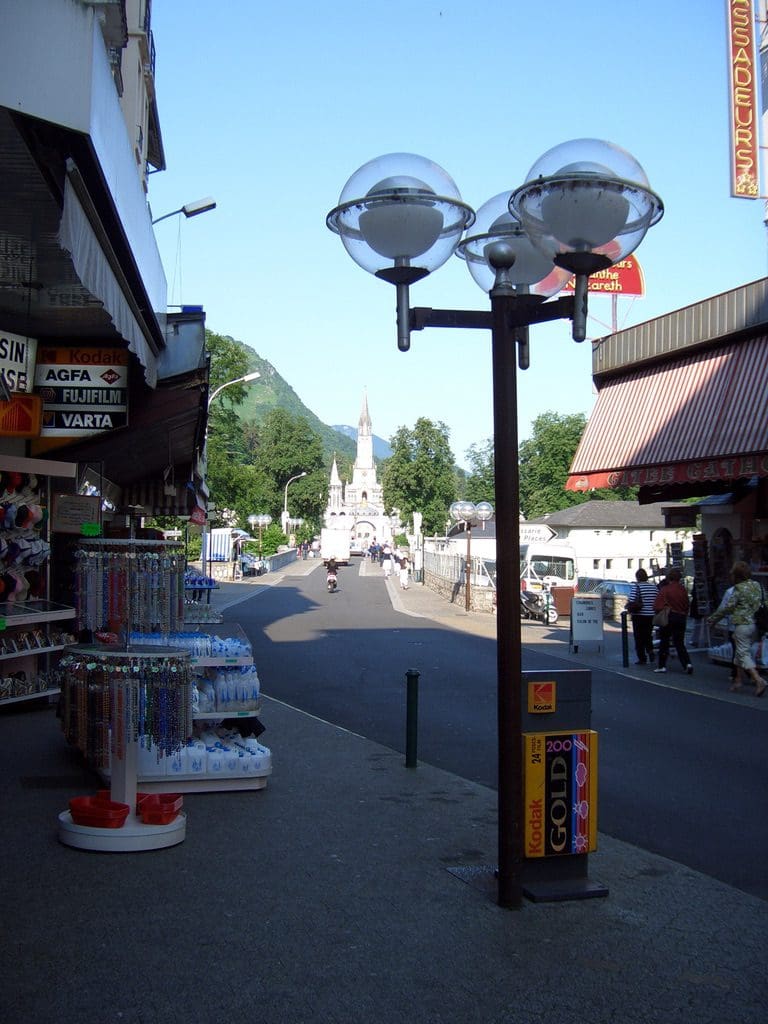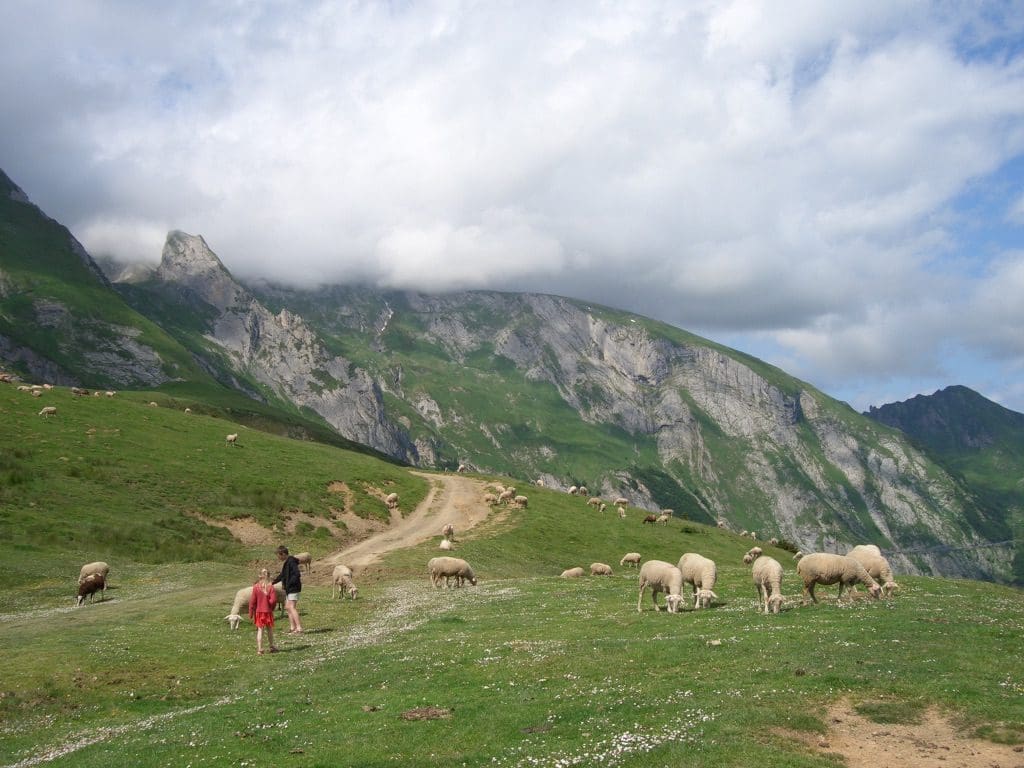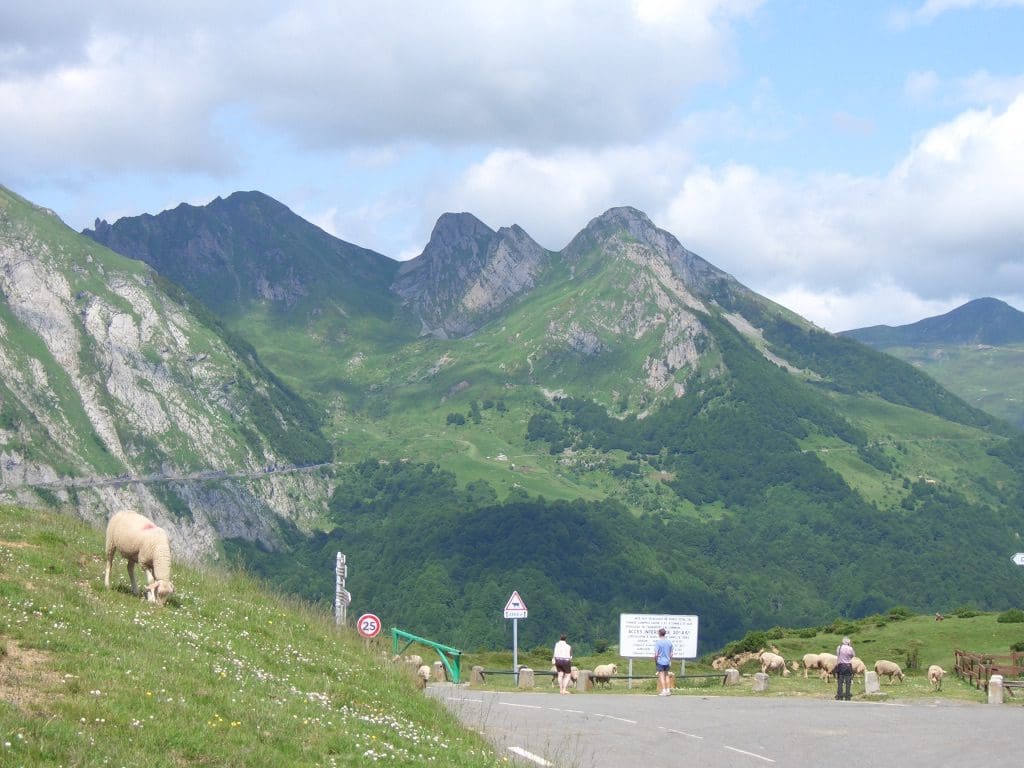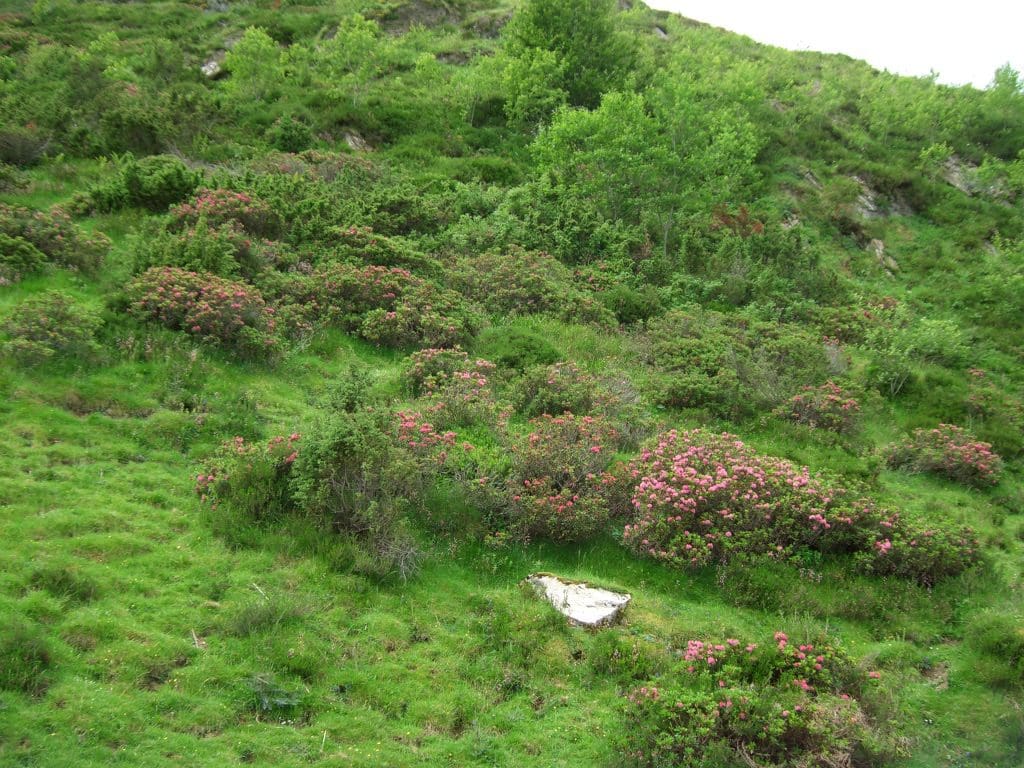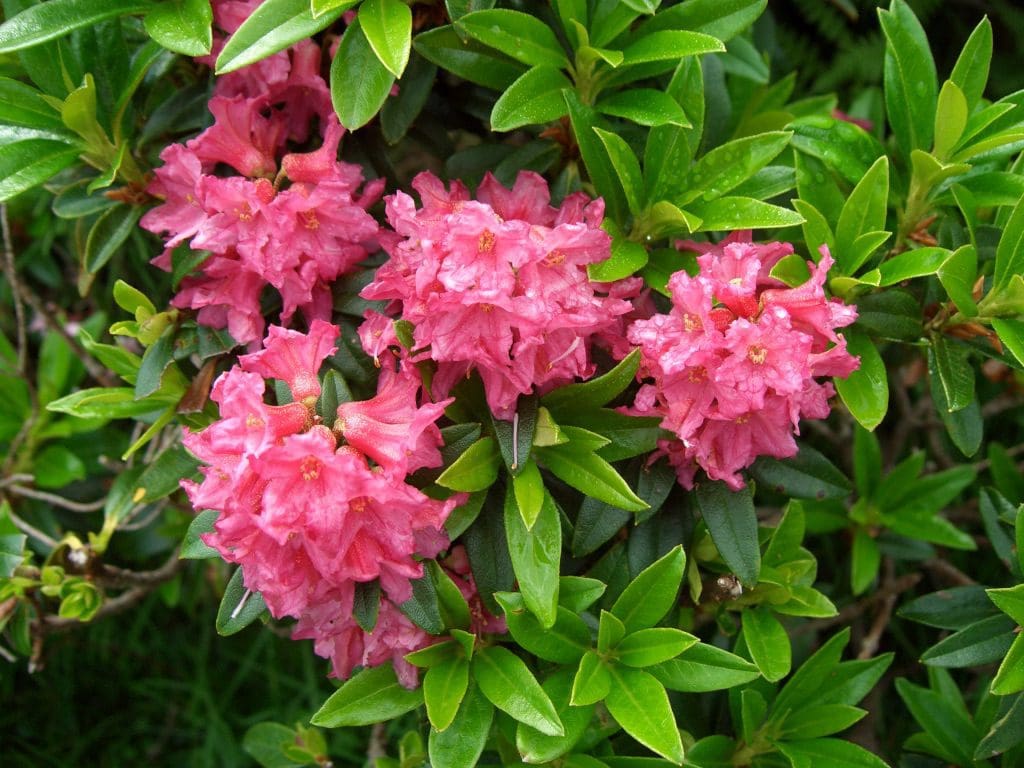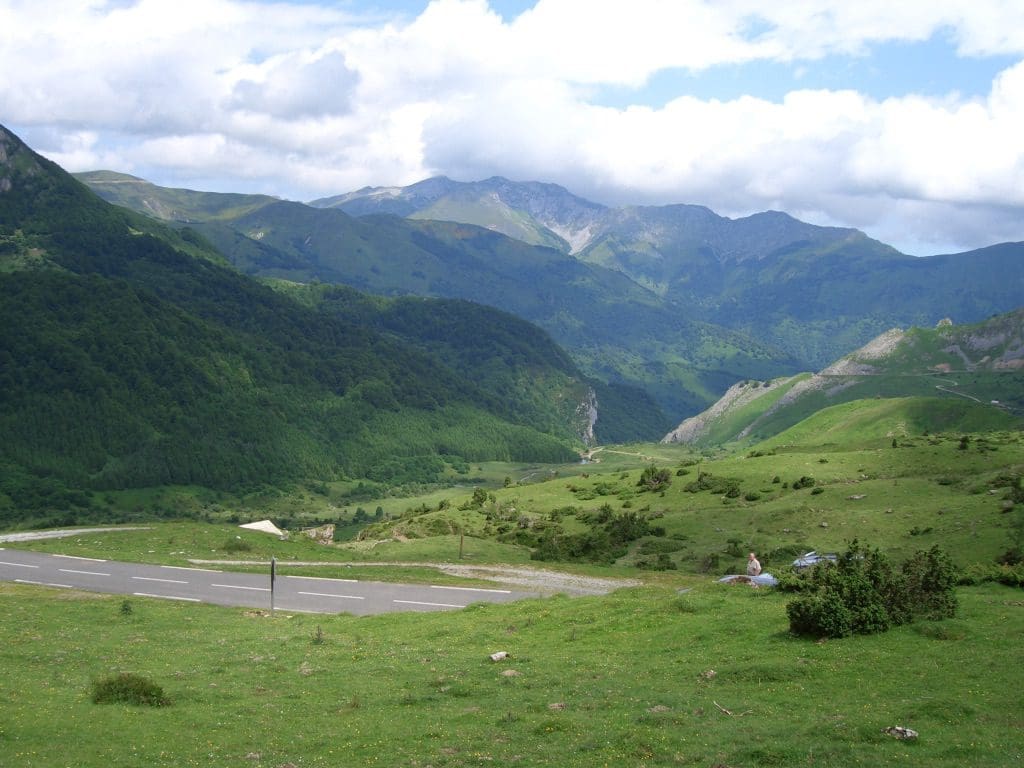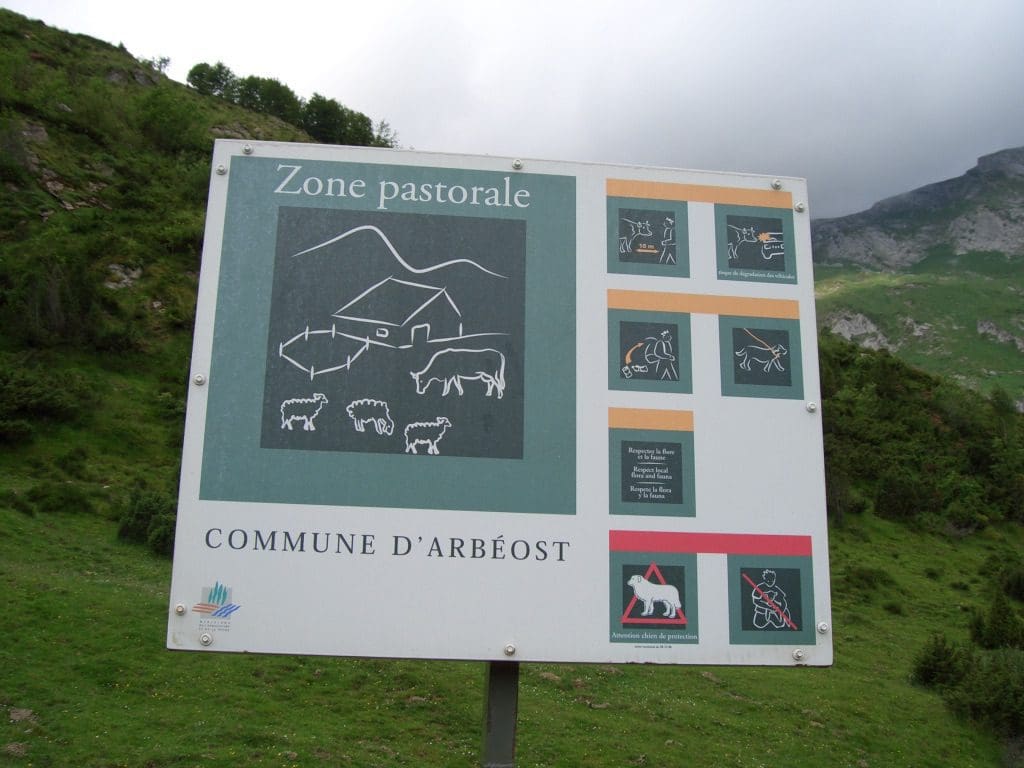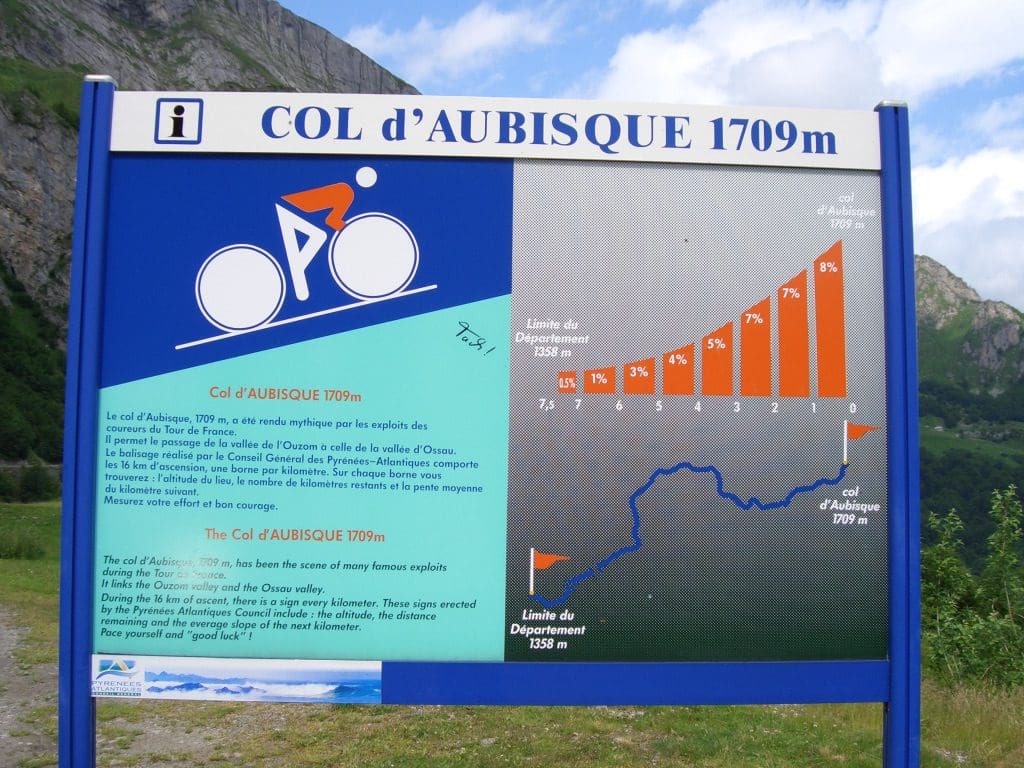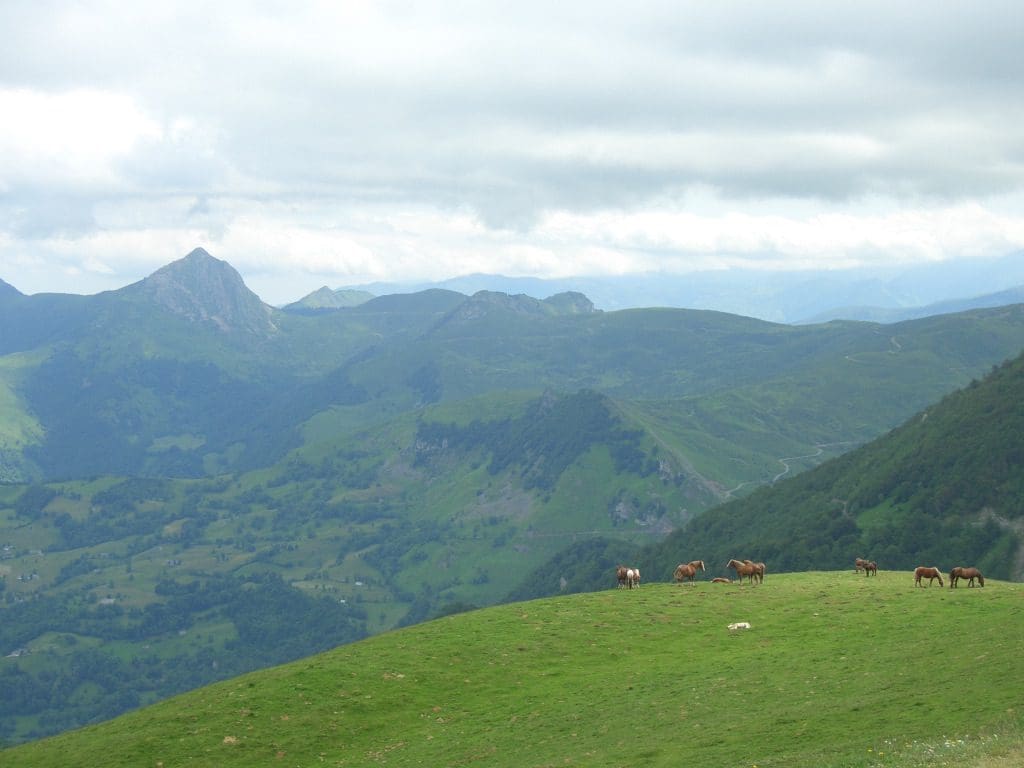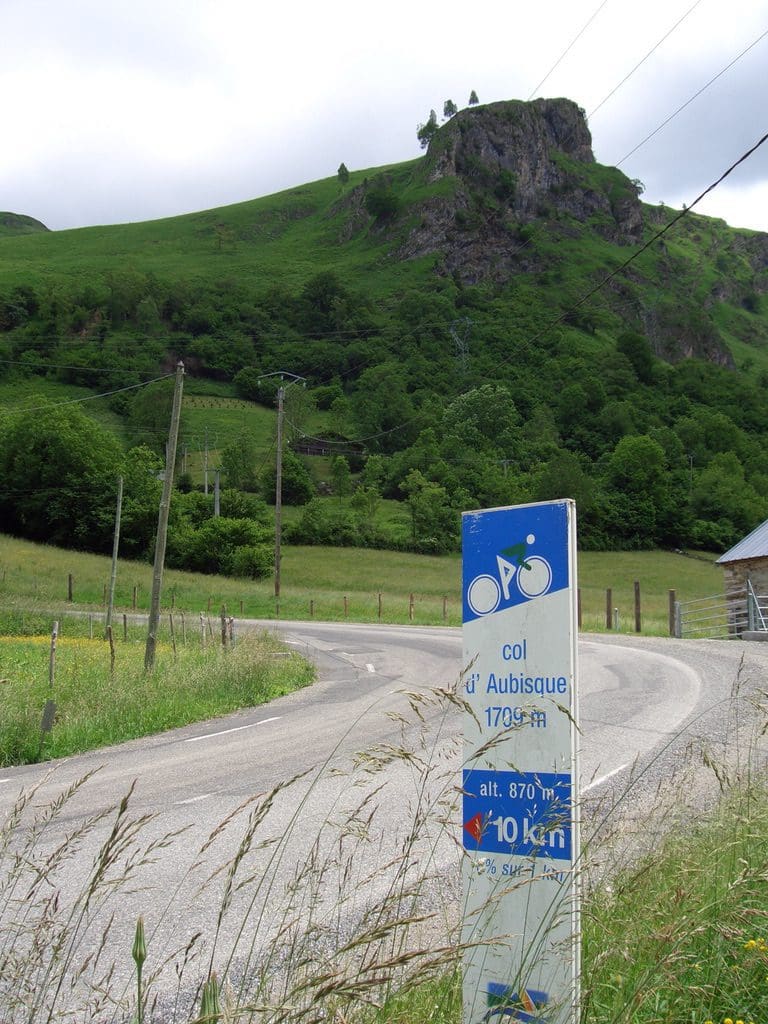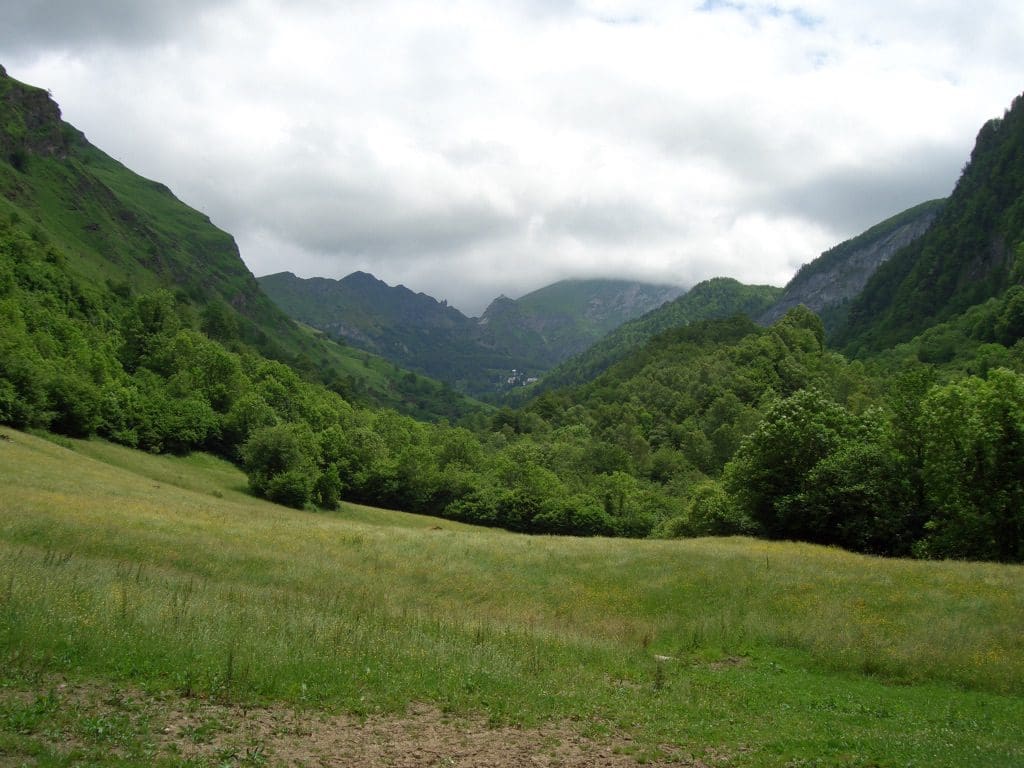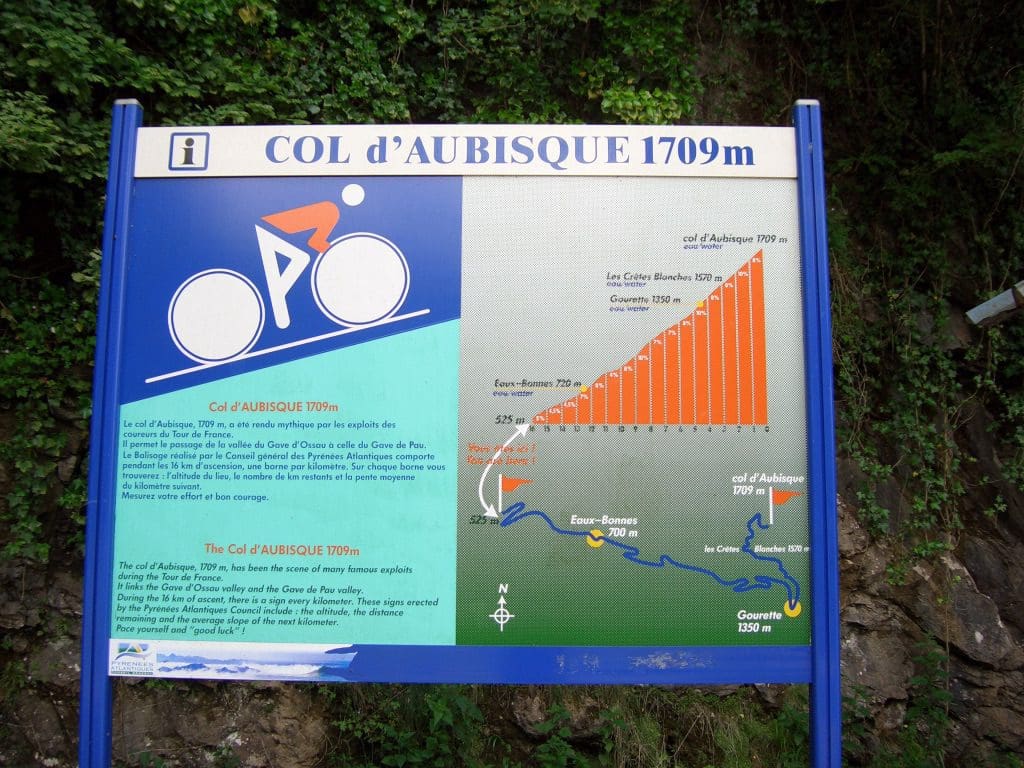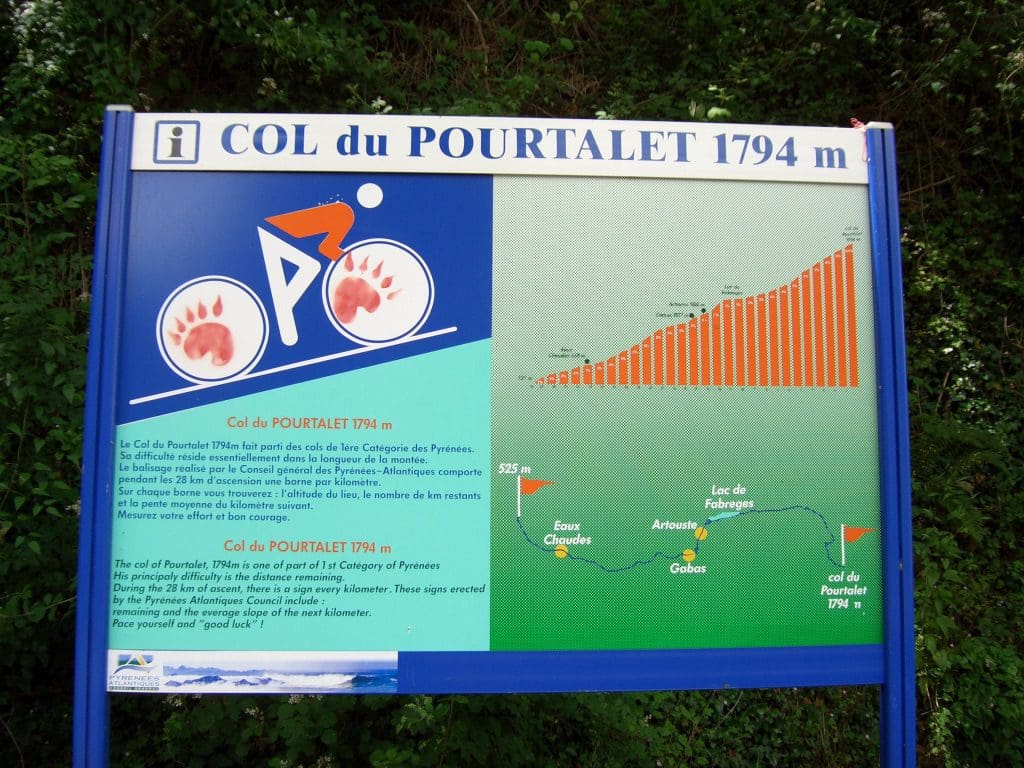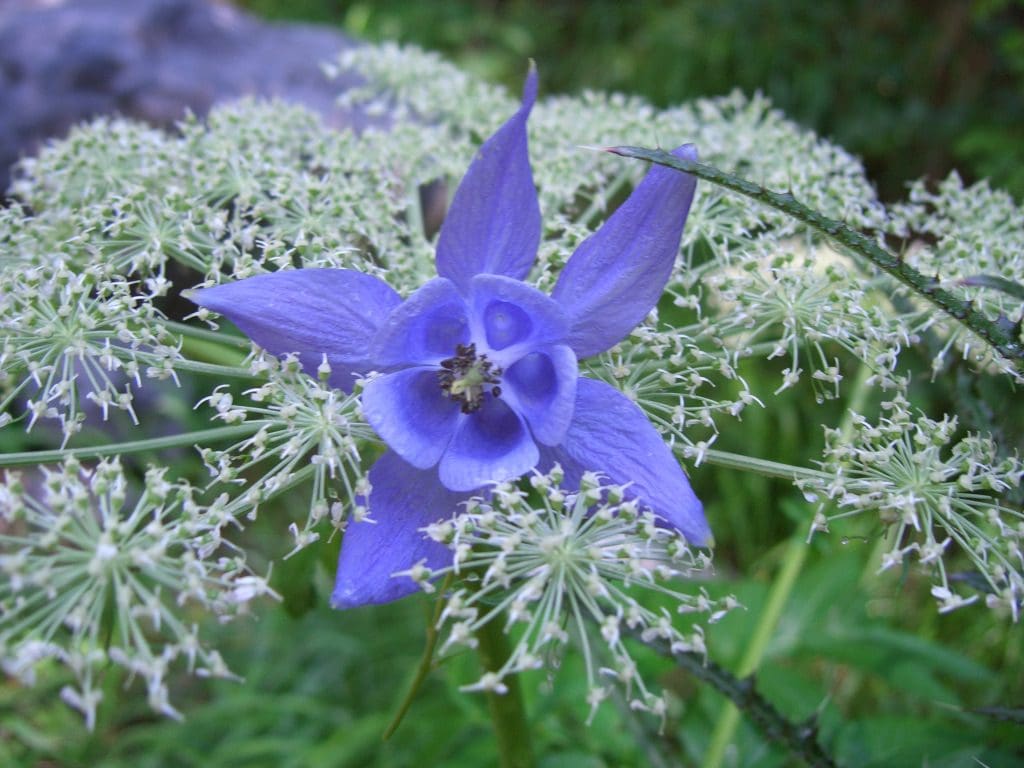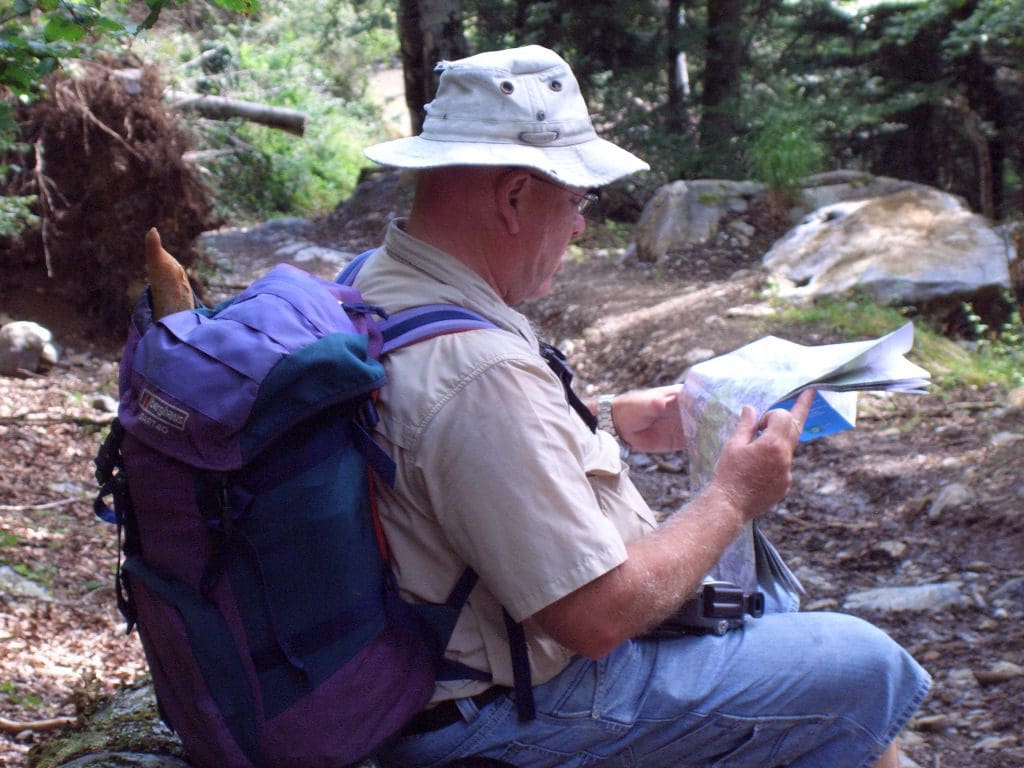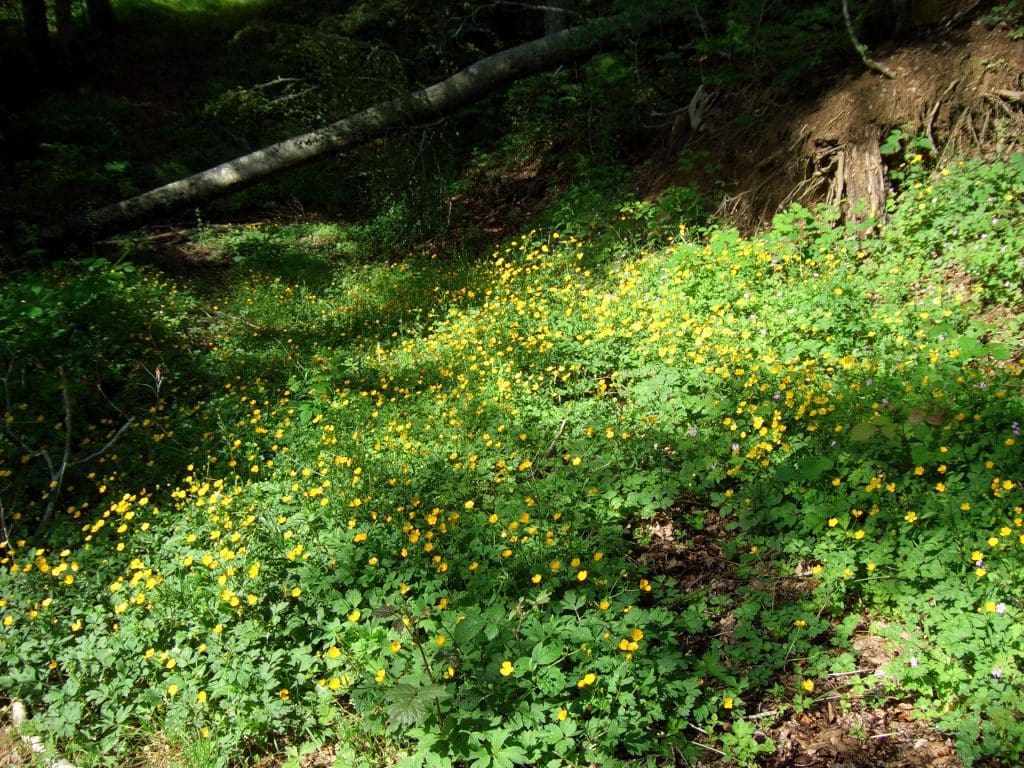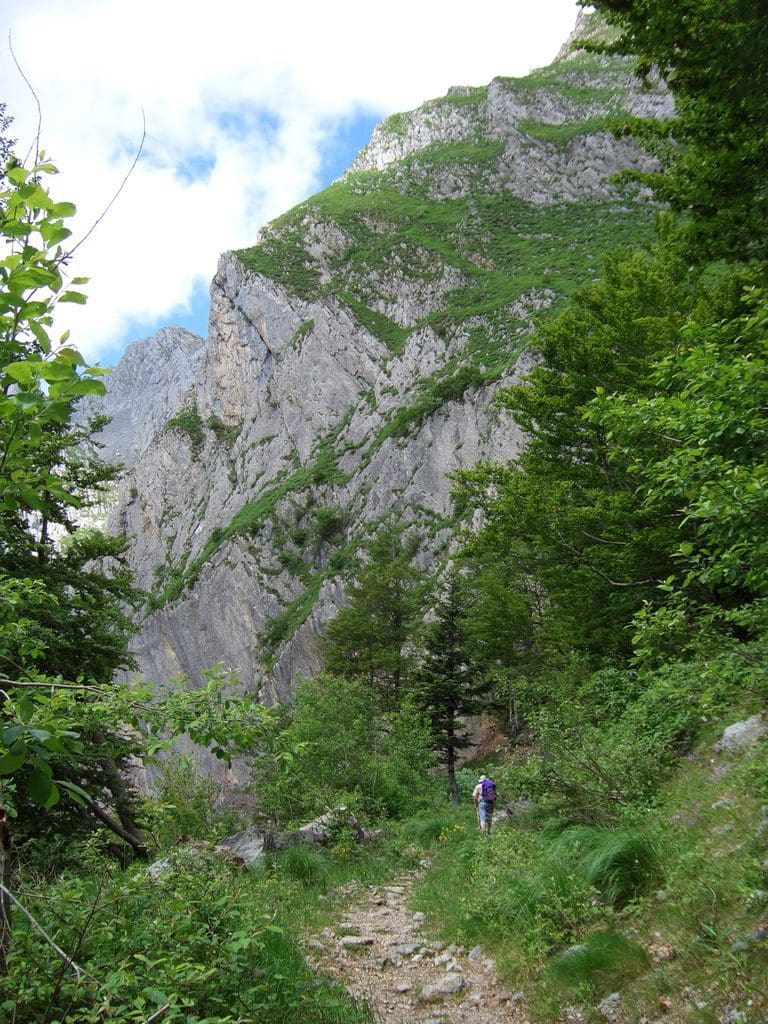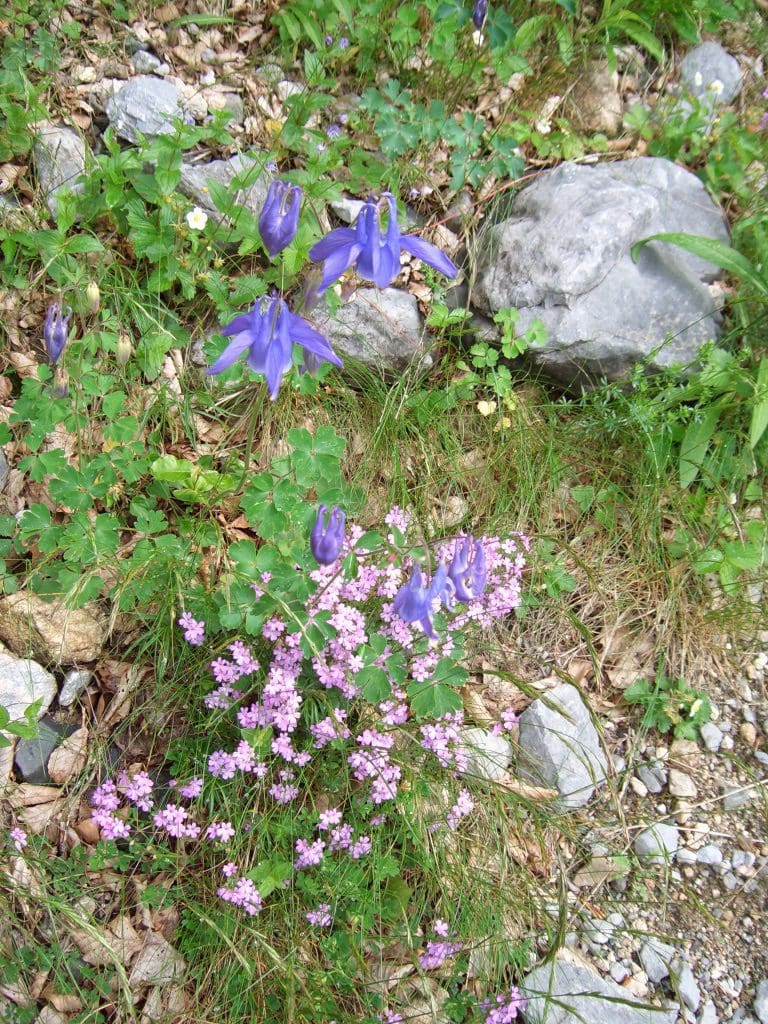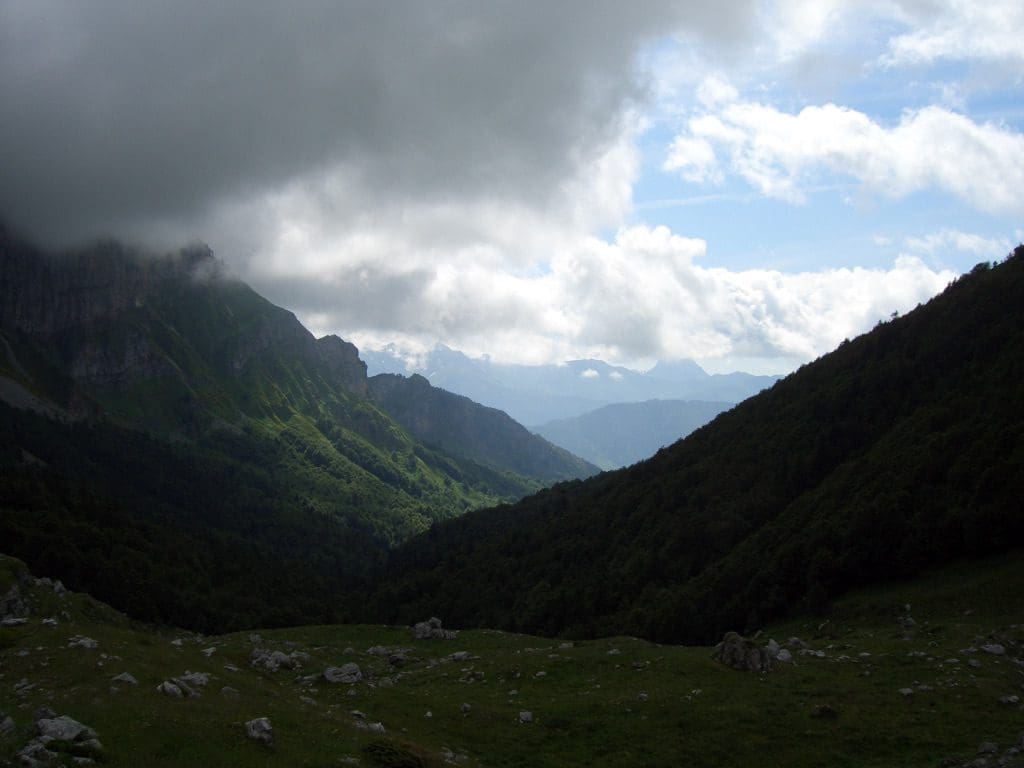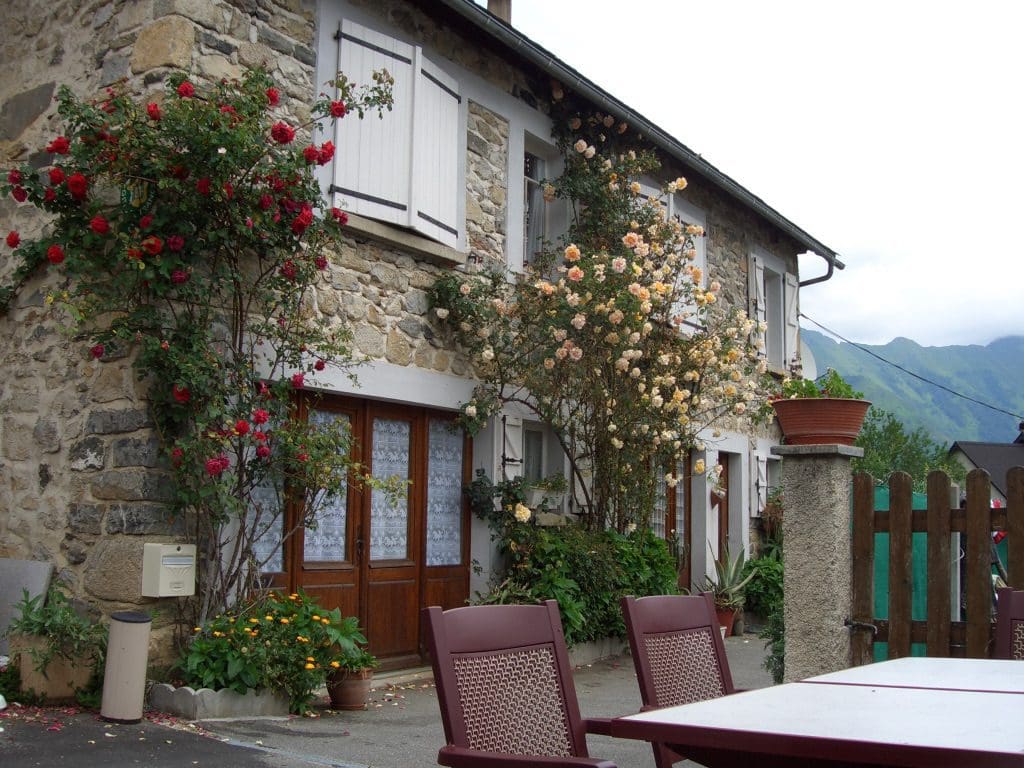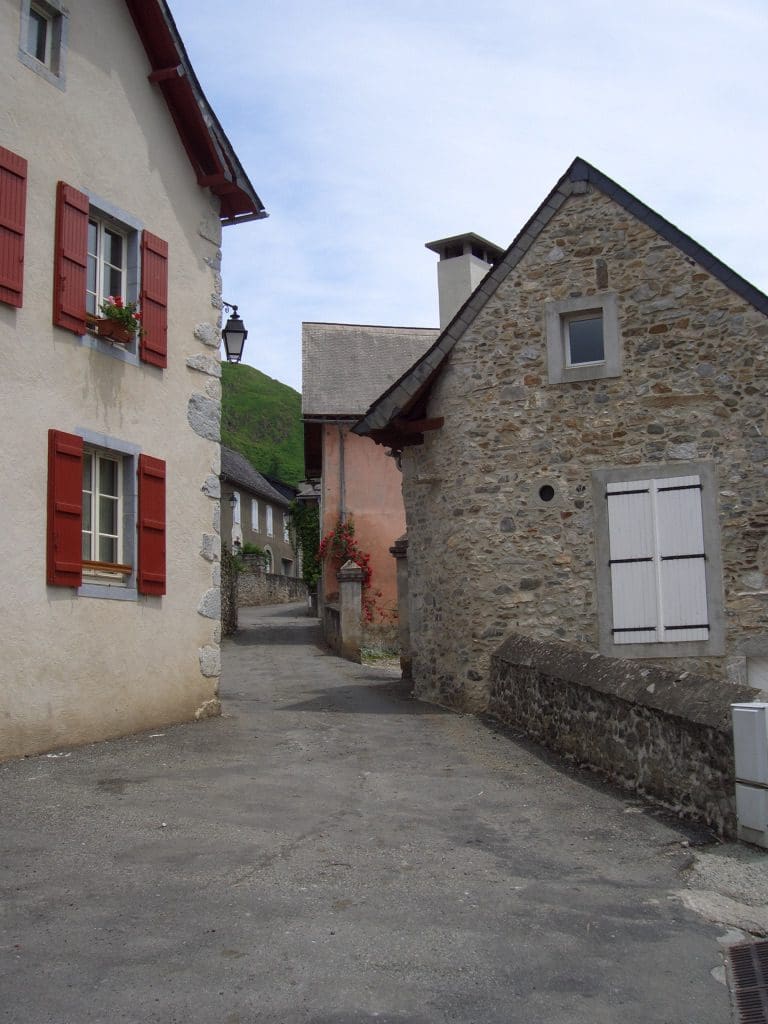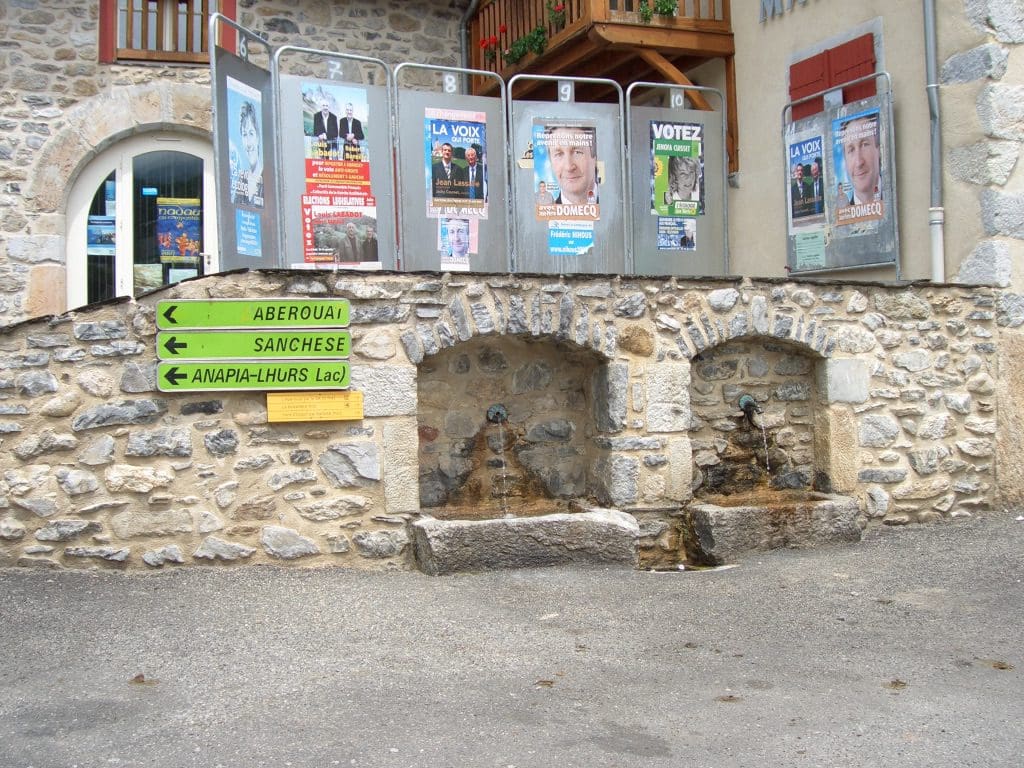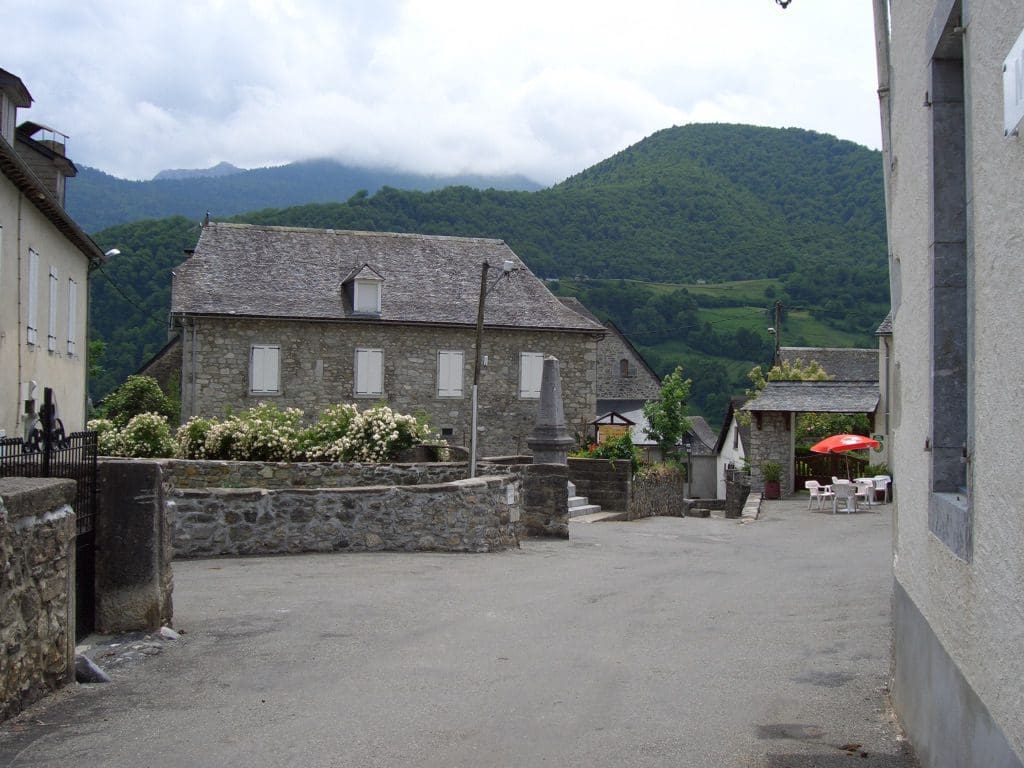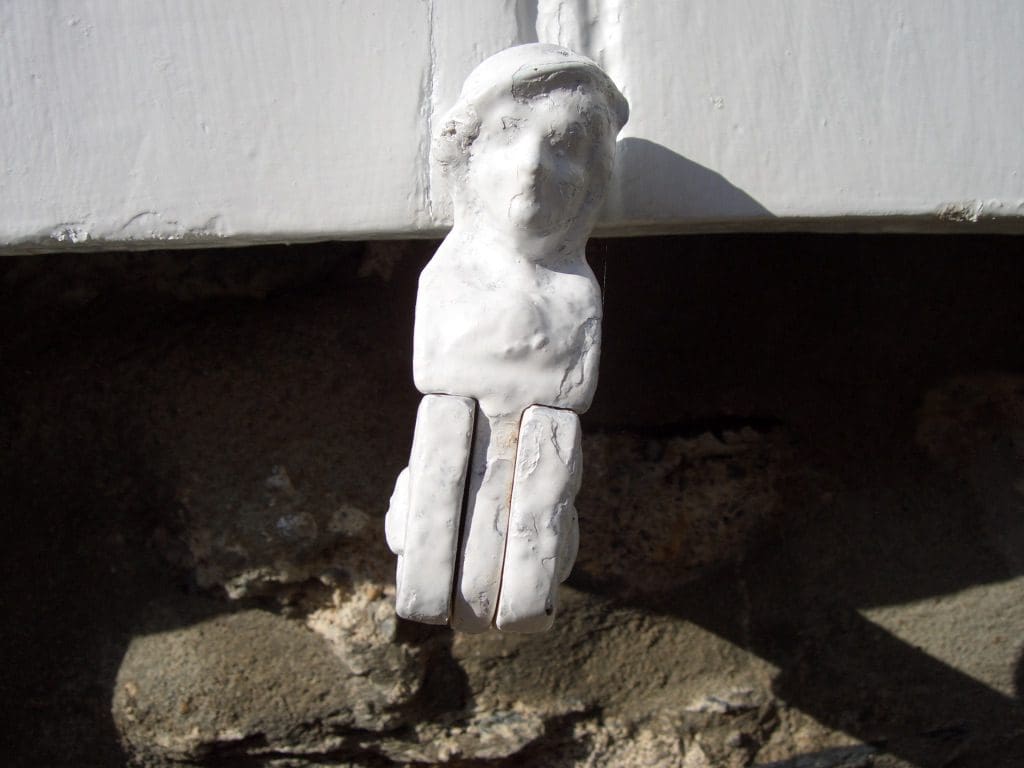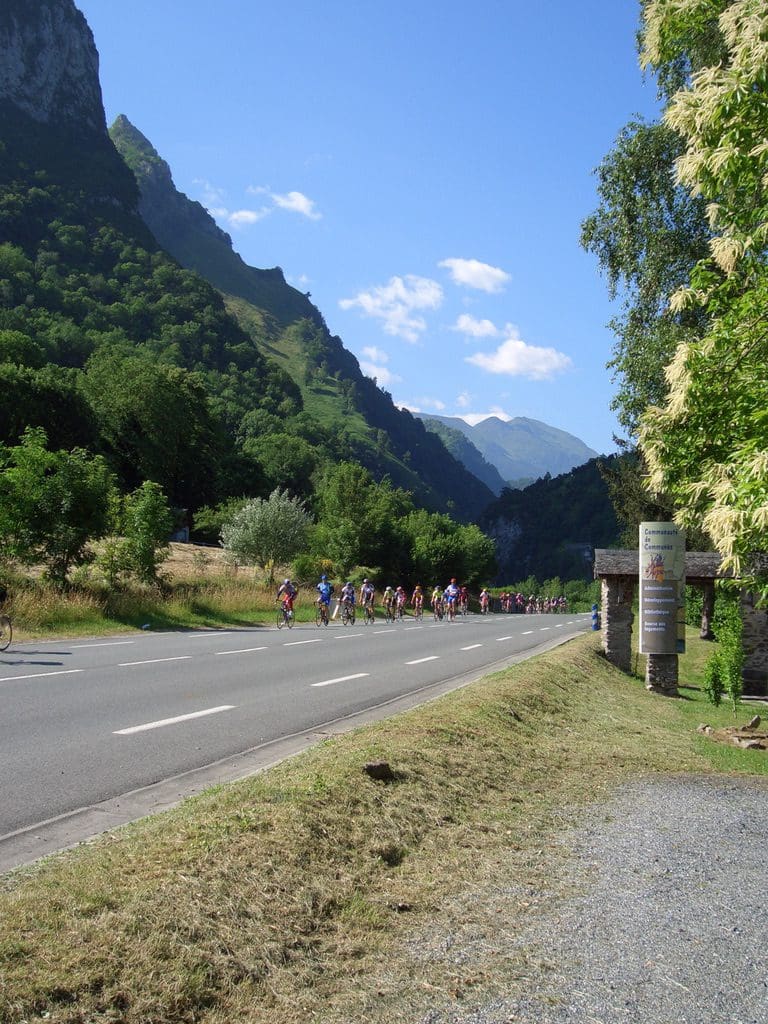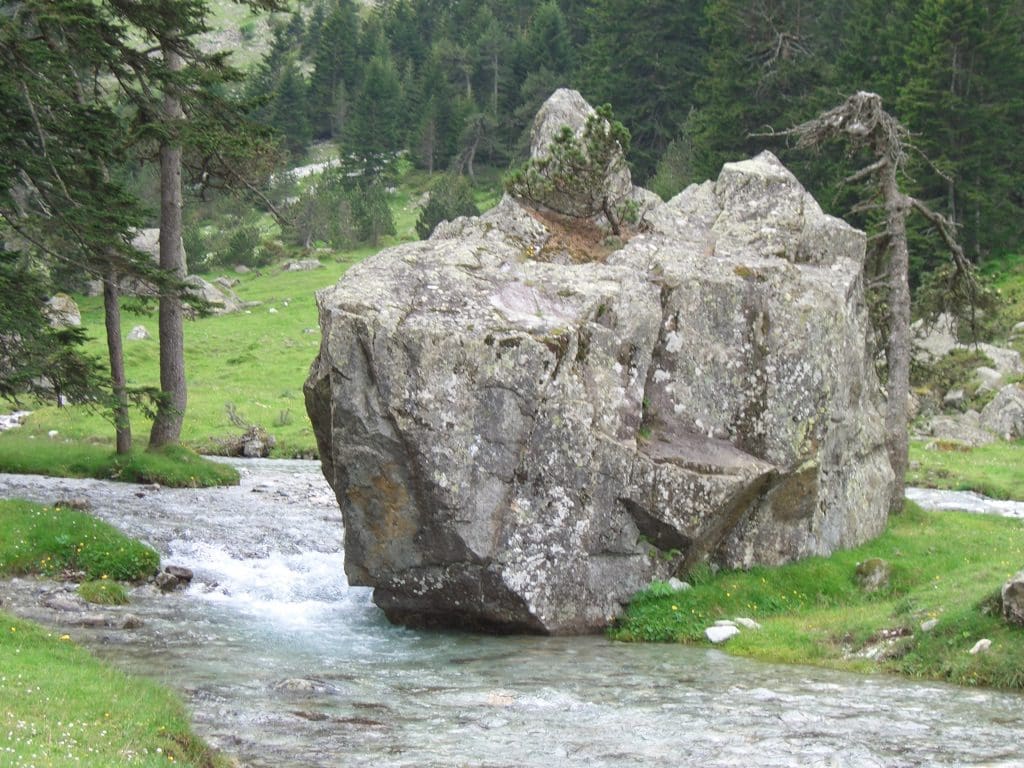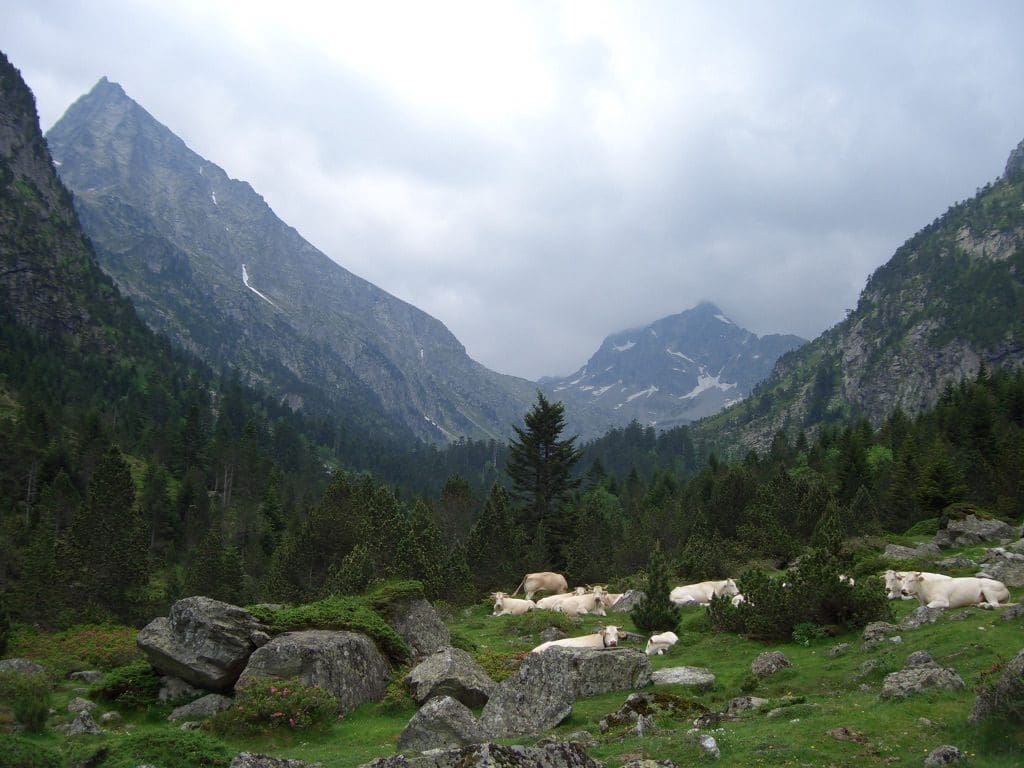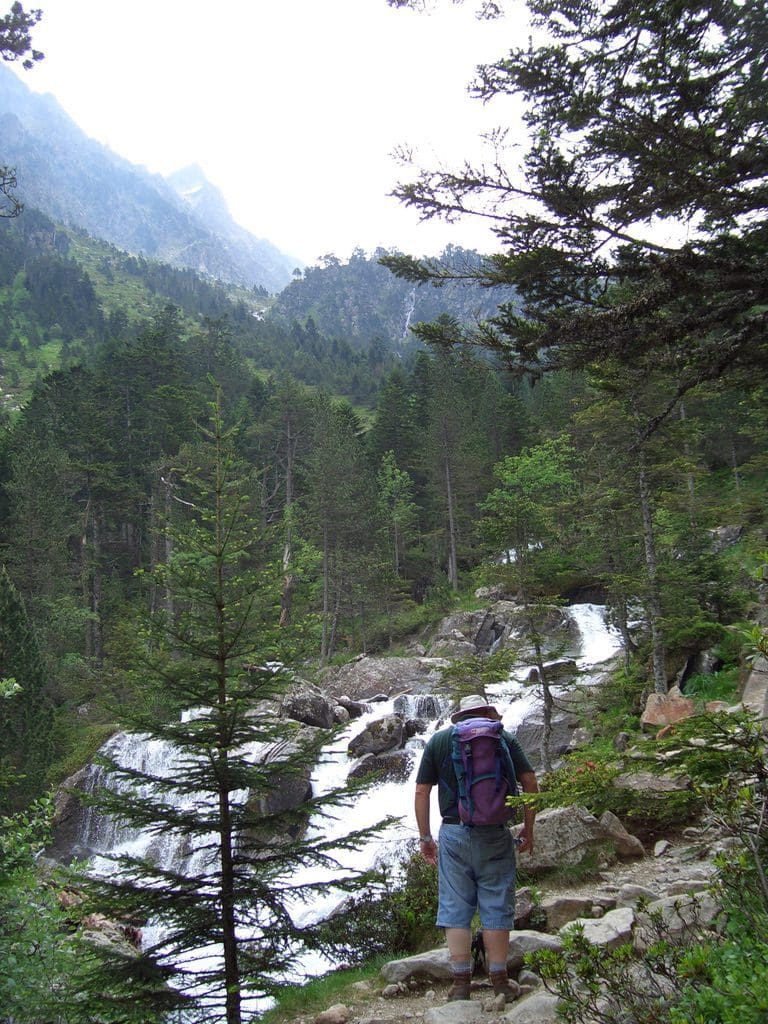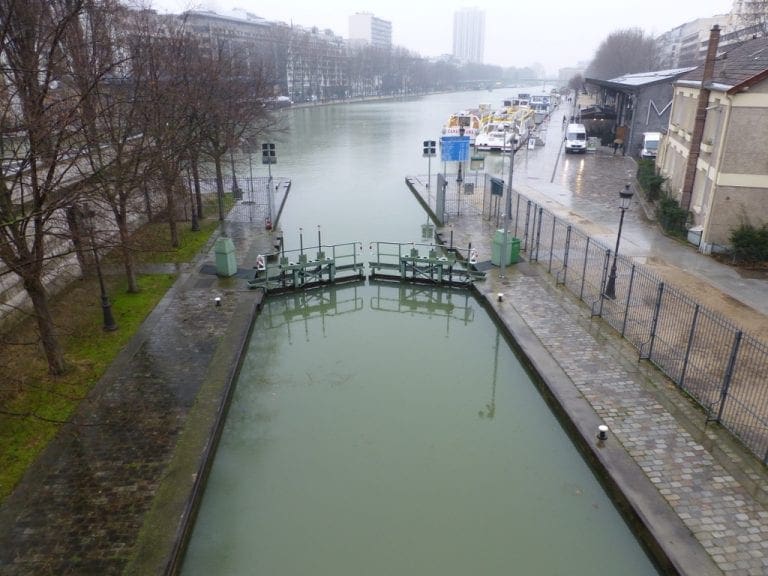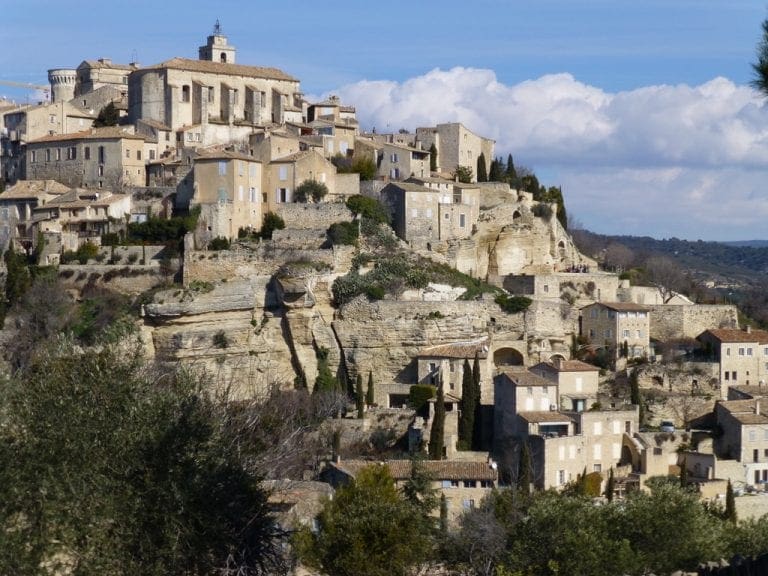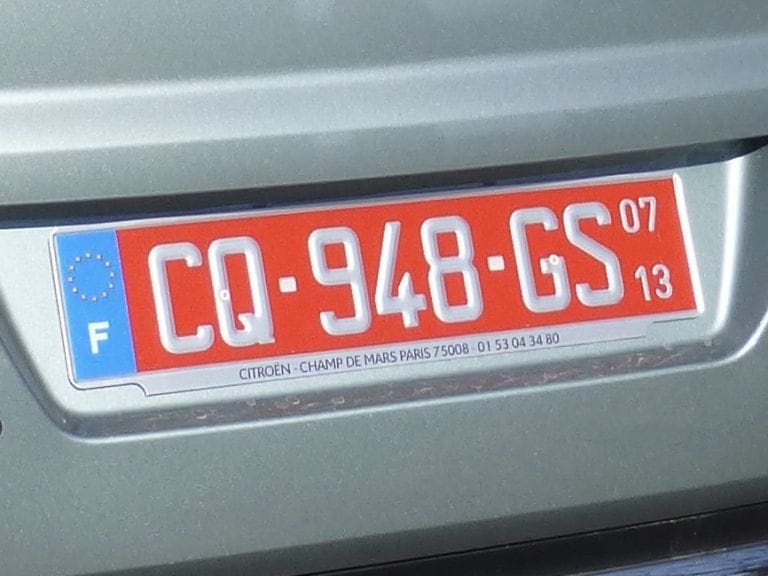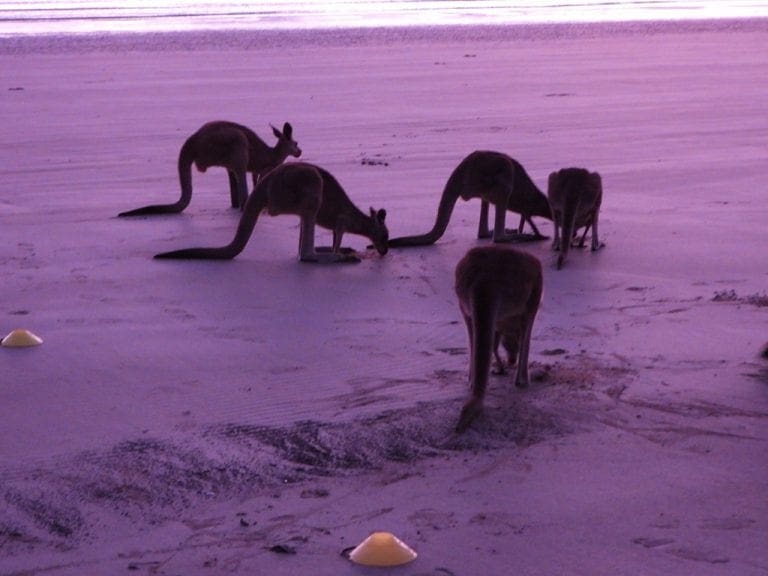Pyrenees
19/6 After a long and difficult day driving south heading for the Pyrenees (big chunks of tollways 20 euro), we have found ourselves in a 2 star hotel in Lourdes. There are more hotels here per metre than any other place we have seen. It is a very sad town, full of people wanting to cure their loved ones or themselves. All hotels and restaurants have wheelchair access and handrails. Also, as one would expect, full of pilgrims with their blue, green or red scarves and their covered candles.
(We had been planning to go to Airbus at Toulouse today. However, all tours in French are booked up until next Wednesday. Tours in English are held very infrequently – apparently on the 32nd of each month. We don’t know what we have booked – it might be a tour of the car park – however, we are looking at some part of Airbus next Wednesday.
20/6 We needed to find a bank this morning, so we went for a walk through Lourdes – through the gauntlet of shops selling rosaries, pictures of Bernadette, flick knives, 10 litre bottles of holy water. This was an experience. From there some food at the local E.Leclerc supermarket, a very popular place to shop.
From there we made our way along the route that the Tour will take on stage 16 (25 July – shown on SBS at 6pm on 26 July, don’t miss it). That day the tour will end by climbing up Col d’Aubisque after a 215km day when they do 4 ‘haute’ category climbs. We went in the reverse direction for 40 km or so over two of those climbs. Awe inspiring stuff. There were many cyclists following the route. How many of those were Tour riders out for a prackie, we do not know. Lots of them took photos of themselves when they reached the top of the climbs so I feel they were amateurs
Along the way were huge Griffon Vultures soaring among the peaks. They had become almost extinct but a rehabilitation program at Laruns now has thousands of breeding pairs. Griffon as in coat of arms. They are very big birds.
We ended up in a camp site (at Lescun in the Pyrenees south of Pau near the border with Spain) that for once has almost exclusively tents. People here for the walking. It is good to be in a campground that is not wall to wall motor homes. The road up to this one is far too steep for the vans and motor homes. To get to Lescun from the main road down in the valley we climbed in first and second gear around a series of hairpin bends on a very narrow road. The village boasts a population of about 400 and caters for hundred (if not thousands) of walkers who are doing the GR10 across to Spain as well as people like us who are day walkers in the area. Driving through Lescun required breathing in to get through some of the narrow lanes lined with rose covered houses. In fact one day they decided to do a bit of road works on the main road and we had to fold in the rear vision mirrors to fit between two houses and then came out through the open air tables in the town square (that had been shifted slightly to one side for the day) trying not to run into the myriad of village dogs. Of course not to mention the people who stopped in the middle of the lane way for a chat on the way to the shop that sells anything that you may need and opens from 8.30am to noon. The church bells peal the hours and the half hours so you don’t really need a watch anywhere in the valley. Music is not necessary as each herd of cows, sheep, horses, mules and donkeys have their own bells. Rain seemed to quieten them a little but their donging reverberated around the hills 24/7. At first, I though it would annoy me, but after about an hour we didn’t notice them unless you listened for them.
21/6 Today we walked into Lac de Lhurs, a 15 km out and back walk that climbed from the carpark at 1000m to 1690m – much of the climb was 25%-33%. An extremely enjoyable walk with spectacular scenery. The mountains that make the cirque for the lake form the border with Spain. We were considerably out of condition after so much food and no exercise, and Geoff in particular arrived at exhaustion a few times. The scenery here is spectacular. Not just mountains but mountains on their ends. The strata around Lescun is heavily folded and has been turned vertical in places. This has then been cut through by one big glacier and several smaller tributary glaciers, leaving remarkable exposed sheer rock faces a couple of thousand metres high. The wild flowers were spectacular – purple, blue, yellow, white, pink and some even green. It seems strange to walk in an area where you cannot put a name to about 95% of the vegetation. Did I mention the road to the car park? Even narrower than the one to the village. The grass on either side was quite tall and we had to wind up the windows to stop getting hit by grass seed – not good for hay fever.
22/6 Today was an easy walking day. We just went into the cirque above Refuge De L’aberaout. Compared to yesterday this was very gentle. It climbed only 200 metre in total, undulating through a beech forest. The second of Geoff’s two walking poles broke on the way down. (The first broke on the way down from the walk at Glendaloch, all those days ago. He has used a piece of fencing wire to repair both. There is serious doubt they will be going home with us. Got back to the village just in time before the kitchen of the tabac closed for the afternoon. Decided to treat ourselves to lunch and sat outside with a beer waiting for the lamb chop to be cooked. In other places you would expect on a windy day to see a few bits of litter blown down the street – not in Lescun. Believe it or not we had rose petals. I was quite impressed.
It rains most nights. The days start absolutely clear, by 9am the mountains have begun to gather a few wisps of cloud which builds up more with each hour. Tonight they are talking of snow. We are sitting in the car. (It did not snow.)
Something about cheese. The cheese we picked up at Lourdes a few days ago needs a description. When we first cut it, Geoff carefully peeled the evil looking coating off – the cheese tasted something like an Emmentaler – distinctly sweet. But wait, this evil-looking (and smelling) coating actually tastes ok. When eaten with the cheese, it completely changes the flavour to a distinctive excellent flavour. Geoff has decided to call it ‘dog-shit’ cheese for a very apparent reason – appearance that is not taste.
23/6 We moved on. We got away to a 9am start from the beautifully situated camp ground, bought a few things (bread & cheese) from the shop in the village. (BTW, that village has the narrowest streets we have found. Two roads pass through it – the NR134 and D390. In places the NR134 gets so narrow we had to fold both wing mirrors back just to get between the houses. An incredible, unspoilt, villagey place in the most picturesque spots.). Then underway, we headed down the hill (past the hydro station) to the main road, and … Gendarmes? Was that a bike? Was that a lot of bikes? @#$#!?#$#!! We had stumbled into the middle of a huge bike ride that had come up from Spain (by the language). We pulled over and watched. Helen lost count at 1,000 bikes. We think at least 2-3,000 went past us mainly in groups of 50. (each on a $1-2,000 bike), and we have no idea how many had gone past before we got there. We don’t know where they were going to or from. These people take their cycling very seriously. It was certainly a major event with Gendarmes at each small road or farm track all the way. We got sick of it and tried to drive between groups for a while. The Gendarmes let us go until the next narrow streeted village when we were diverted off the road. We waited there until the ‘Fin de la course’ vehicles went through. Then headed off and followed the Girl’s instructions through a host of back roads (to avoid the cycle pack) heading for Lourdes (again). We were almost there when, more bikes. This time it was the Lourdes triathlon. The poor buggers had to ride through the usual Lourdes traffic jam packed with tour busses, cars, wheelchairs and pilgrims.
From there up the valley to Cauterets to another campsite beside a rushing river. We hope to do a little more walking from here.
We had an excellent pizza and salad at Pizza Giovanni where they provide free wifi access when you eat there. Cauterets is a thriving village that has a ski hill nearby. Several sports stores – we finally found a replacement gas cylinder. (Supermarkets all have Camping Gaz. We, of course, have a Coleman – another French product – that is much harder to find.) Between 6 and 7pm the streets were full of people out promenading before dinner. We bought some Berlingots, a boiled lolly sweet that was developed to deal with the knock-you-over bad breath that people get from taking the waters at Lourdes and here.
24/6 Another day of walking. We got away to a late start after a good solid shower of rain that fell between Geoff getting up and Helen’s leisurely rise. Not a likely day for a walk so we chose the shorter, flatter day walk. We don’t need to take lunch. We will be back in a couple of hours. Well, it was spectacular. We walked up a beautiful u-shaped valley with a rushing river cutting its way down. Many splendid cascades. The river reached a mature (braided) stage between rapids. The rocks must be very hard bands to have remained in place despite the rushing water. Our destination was a lake in a hanging valley (held back by a band of very tough granite) beside which was a refuge that sold lunches and accommodates walkers overnight. The lake and refuge are in a cirque surrounded by very high mountains (some of which form the border with Spain) and one still held its snow in patches. Heavy rain clouds hung around the peaks and looked very threatening. However, it did not rain more than an occasional drop. We climbed up about 300m over 2 hours, most of the rise was at the lake end. This was Sunday, and the French were out walking too. There would have been a several hundred walking and picnicking on that track. Lots of ‘bon jour’s. We got back to the car at 2:45 for a very late lunch, quite foot sore after 4 hours round trip.
We have returned to the campsite. Helen is dealing with the washing (after all that slogging up mountains our duds needed to duel it out with some suds) We are using the walking poles as clothes-props. Geoff is sitting next to the toilet block where there is the only electricity outlet to charge computer and phone.
